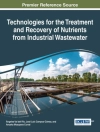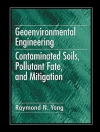Urban Remote Sensing is designed for upper level undergraduates, graduates, researchers and practitioners, and has a clear focus on the development of remote sensing technology for monitoring, synthesis and modeling in the urban environment. It covers four major areas: the use of high-resolution satellite imagery or alternative sources of image date (such as high-resolution SAR and LIDAR) for urban feature extraction; the development of improved image processing algorithms and techniques for deriving accurate and consistent information on urban attributes from remote sensor data; the development of analytical techniques and methods for deriving indicators of socioeconomic and environmental conditions that prevail within urban landscape; and the development of remote sensing and spatial analytical techniques for urban growth simulation and predictive modeling.
Tabella dei contenuti
List of Contributors.
Author’s Biography.
Preface.
PART 1 INTRODUCTION.
1 What is urban remote sensing? (Xiaojun Yang).
PART 2 REMOTE SENSING SYSTEMS FOR URBAN AREAS.
2 Use of archival Landsat imagery to monitor urban spatialgrowth (Xiaojun Yang).
3 Limits and challenges of optical very-high-spatial-resolutionsatellite remote sensing for urban applications (Paolo Gamba, Fabio Dell’Acqua, Mattia Stasolla, Giovanna Trianni and Gianni Lisini).
4 Potential of hyperspectral remote sensing for analyzing theurban environment (Sigrid Roessner, Karl Segl, Mathias Bochow, Uta Heiden, Wieke Heldens and Hermann Kaufmann).
5 Very-high-resolution spaceborne synthetic aperture radar andurban areas: looking into details of a complex environment(Fabio Dell’Acqua, Paolo Gamba and Diego Polli).
6 3D building reconstruction from airborne lidar point cloudsfused with aerial imagery (Jonathan Li and Haiyan Guan).
PART 3 ALGORITHMS AND TECHNIQUES FOR URBAN ATTRIBUTEEXTRACTION.
7 Parameterizing neural network models to improve landclassification performance (Xiaojun Yang and Libin Zhou).
8 Characterizing urban subpixel composition using spectralmixture analysis (Rebecca Powell).
9 An object-oriented pattern recognition approach for urbanclassification (Soe W. Myint and Douglas Stow).
10 Spatial enhancement of multispectral images on urban areas(Bruno Aiazzi, Stefano Baronti, Luca Capobianco, Andrea Garzelliand Massimo Selva).
11 Exploring the temporal lag between the structure and functionof urban areas (Victor Mesev).
PART 4 URBAN SOCIOECONOMIC ANALYSES.
12 A pluralistic approach to defining and measuring urban sprawl(Amnon Frenkel and Daniel Orenstein).
13 Small area population estimation with high-resolution remotesensing and lidar (Le Wang and Jose-Silvan Cardenas).
14 Dasymetric mapping for population and sociodemographic dataredistribution (James B. Holt and Hua Lu).
15 Who’s in the dark-satellite based estimates ofelectrification rates (Christopher D.Elvidge, Kimberly E. Baugh, Paul C. Sutton, Budhendra Bhaduri, Benjamin T. Tuttle, Tilotamma Ghosh, Daniel Ziskin and Edward H. Erwin).
16 Integrating remote sensing and GIS for environmental justiceresearch (Jeremy Mennis).
PART 5 URBAN ENVIRONMENTAL ANALYSES.
17 Remote sensing of high resolution urban impervious surfaces(Changshan Wu and Fei Yuan).
18 Use of impervious surface data obtained from remote sensingin distributed hydrological modeling of urban areas (Frank Canters, Okke Batelaan, Tim Van de Voorde, Jaroslaw Chorma´nski and Boud Verbeiren).
19 Impacts of urban growth on vegetation carbon sequestration(Tingting Zhao).
20 Characterizing biodiversity in urban areas using remotesensing (Marcus Hedblom and Ulla Mortberg).
21 Urban weather, climate and air quality modeling: increasingresolution and accuracy using improved urban morphology (Susanne Grossman-Clarke, William L. Stefanov and Joseph A.Zehnder).
PART 6 URBAN GROWTH AND LANDSCAPE CHANGE MODELING.
22 Cellular automata and agent base models for urban studies:from pixels to cells to hexa-dpi’s (Elisabete A. Silva).
23 Calibrating and validating cellular automata models ofurbanization (Paul M. Torrens).
24 Agent-based urban modeling:simulating urban growth andsubsequent landscape change in suzhou, china (Yichun Xie and Xining Yang).
25 Ecological modeling in urban environments: predicting changesin biodiversity in response to future urban development (Jeffrey Hepinstall-Cymerman).
26 Rethinking progress in urban analysis and modeling: models, metaphors, and meaning (Daniel Z. Sui).
Index.
Circa l’autore
Xiaojun Yang has authored or co-authored more than 70 publications including two edited volumes on urban remote sensing. He was a guest editor for ISPRS Journal of Photogrammetry and Remote Sensing, Photogrametrical Engineering and Remote Sensing, International Journal of Remote Sensing, and Computer, Environment and Urban Systems. Yang has been involved in organizing urban remote sensing sessions at the annual meetings of the Association of American Geographers (AAG) since 2001. This series of events has become a major urban remote sensing forum in USA. Yang currently serves as Chair of Commission on Mapping for Satellite Imagery, International Cartographic Association (ICA).












